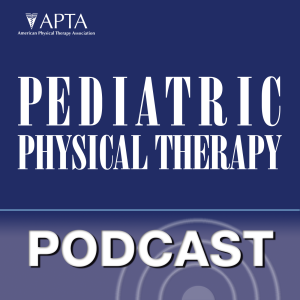
INTERVIEWS IN THIS EDITION
Sandra Jensen-Willett PT MS PCSDirector of Physical Therapy, Munroe Meyer Institute, University of Nebraska Medical Center, Omaha NE
Sitting Matters! Differences Between Sitters and Nonsitters at 6 Months’ Adjusted
“This retrospective study examines differences in prematurity-related risk and compares developmental outcomes between sitters and non-sitters at 6 months adjusted-age.”
OMAHA, NE—An investigation of factors influencing ability to sit upright at six months age—noted from neonatal intensive care unit follow up among infants born preterm or those considered to be at risk of developmental delay—show that motor function drives early development.
Afnan Gmmash BSPT MS, Pediatric Physical Therapist and PhD Candidate, Department of Rehabilitation Sciences, University of Kentucky, LexingtonEarly Intervention Therapy Services for Infants With or at Risk for Cerebral Palsy
“The purpose of this study was to explore the practices physical therapists and occupational therapists use in early intervention for infants with or at risk for cerebral palsy.”
LEXINGTON KY—Infant showing early signs of cerebral palsy—or who are assessed as being at high risk—were found to benefit from early intervention.
Steven Cisco DPT, Seattle Children’s Hospital, Seattle, WashingtonDistance-Based Throwing Programs for Baseball Players From Little League to High School
“Our goal is to create a guide for rehabilitation specialists and players to return to throwing as quickly and safely as possible”
SEATTLE, WA—Children with sports injuries benefited from the best recovery exercises to do to recover by using an evidence-based “Throwing Progam” for injured ball-game players.
Karina Amani Zapata DPT PhD, Research Therapist and Physical Therapist, Texas Scottish Rite Hospital for Children, DallasPhysical Therapy Scoliosis-Specific Exercises May Reduce Curve Progression in Mild Adolescent Idiopathic Scoliosis Curves
“To evaluate the curve magnitude in participants with mild adolescent idiopathic scoliosis (AIS) at high risk of progression who received outpatient physical therapy scoliosis-specific exercises (PSSE).”
DALLAS, TX—Physical therapy success was assessed in patients with scoliosis by measuring the extent to which patients who systematically received physical therapy exercises for scoliosis actually succeeded in getting measurable reductions of curve progression—compared to patients in the control group who were simply observed.
Kara L. Lardinois PT, DPT, C/NDT; Duke University Medical Center, Durham NCPhysical Therapy for a Patient With Alternating Hemiplegia of Childhood: A Case Report
The purpose of this case report is to present an example of physical therapy evaluation, intervention and outcomes for a child with alternating hemiplegia of childhood
DURHAM, NC—A case report throws light on the key role of the physical therapy elements of care for children with the rare, many-faceted and clinically variable condition: Alternating Hemiplegia of Childhood.
Amy Bailes PT, PhD, Physical Therapist, Division of Occupational Therapy and Physical Therapy, Cincinnati Children's Hospital Medical Center, Cincinnati, OHDocumenting physical therapy dose for individuals with cerebral palsy: A quality improvement initiative
This report describes the quality improvement activities used to improve treatment dose documentation for individuals with cerebral palsy and to describe insights gained from this project.
CINCINNATI, OH—Data from therapy sessions among thousands of patients with cerebral palsy have generated clear procedures to optimize care, resulting in significantly improved quality of physical therapy.
More Episodes
 2024-07-17
2024-07-17
 2024-04-02
2024-04-02
 2023-09-20
2023-09-20
 2023-06-30
2023-06-30
 2023-03-28
2023-03-28
 2023-01-06
2023-01-06
 2022-09-29
2022-09-29
 2022-06-24
2022-06-24
 2022-04-04
2022-04-04
 2021-12-22
2021-12-22
 2021-10-01
2021-10-01
 2021-06-29
2021-06-29
 2021-03-30
2021-03-30
 2020-12-18
2020-12-18
 2020-10-01
2020-10-01
 2020-06-30
2020-06-30
 2020-03-27
2020-03-27
 2019-12-20
2019-12-20
 2019-09-27
2019-09-27
Create your
podcast in
minutes
- Full-featured podcast site
- Unlimited storage and bandwidth
- Comprehensive podcast stats
- Distribute to Apple Podcasts, Spotify, and more
- Make money with your podcast
It is Free
- Privacy Policy
- Cookie Policy
- Terms of Use
- Consent Preferences
- Copyright © 2015-2024 Podbean.com





